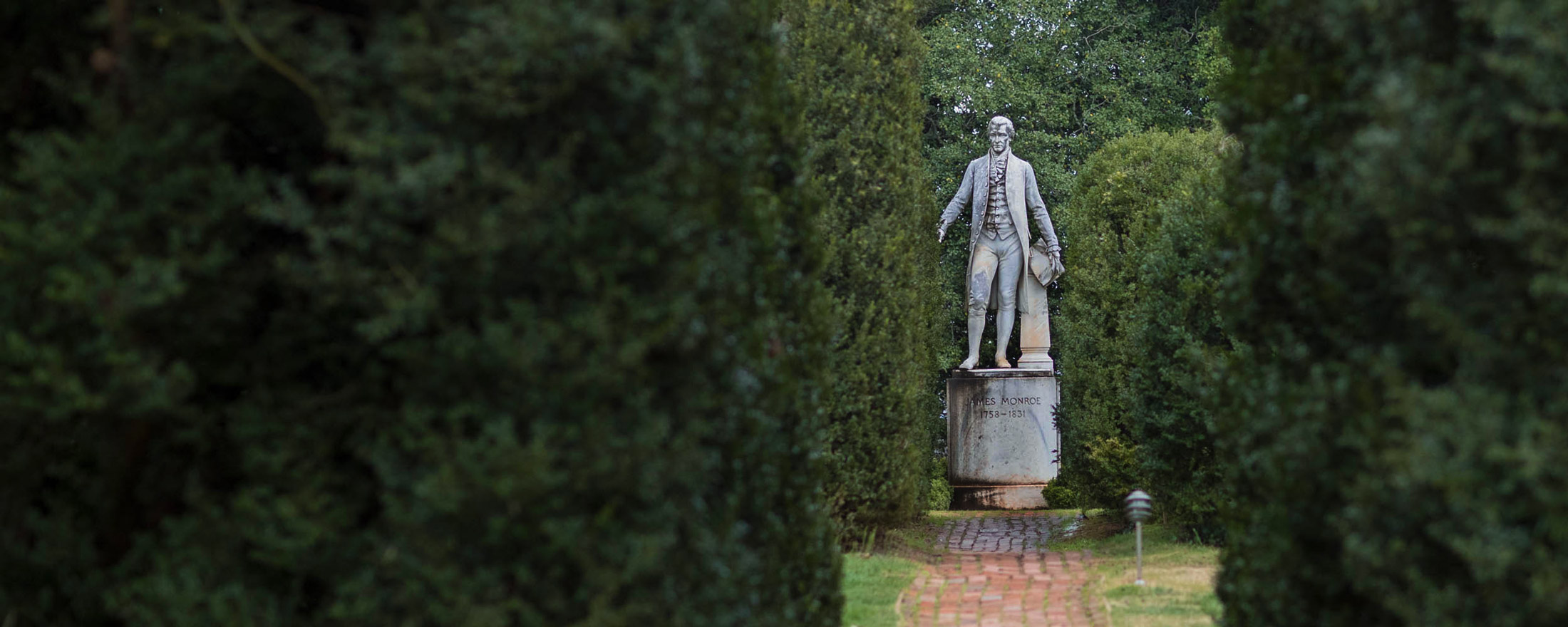What do you do when the building believed to be President James Monroe’s home – a building that attracts a consistent stream of visitors each year – wasn’t actually the Founding Father’s residence?
That’s the question that leaders at Highland, the fifth president’s estate in Albemarle County, enlisted University of Virginia School of Architecture students to help answer this spring. The 14 students enrolled in architectural history professor Lisa Reilly’s “Strategies of Interpretation: Highland” course developed four revamped tours for the site, some using augmented reality technology to take visitors back in time.
Each tour takes into account Highland’s 2016 discovery of the previously buried remains of Monroe’s true house, a much larger house than what currently exists on the property. That more modest home is now believed to be a guest house commissioned by the fifth president at least 15 years after he bought the estate in 1793 and moved in 1799.
“For us, this discovery was a tremendous opportunity and one that we intentionally sought through years of research,” said Sara Bon-Harper, Highland’s executive director. “I don’t know of any other case where a presidential house has been lost and found.”
Monroe – who also lived at the site of UVA’s Brown College – owned the Highland estate until 1826, a time period that included his tenure as governor of Virginia and his two terms as president. Archeologists will excavate what is left of his home– now believed to have burned down – in the yard of the present property, which was previously called Ash Lawn-Highland, but recently returned to “Highland,” the name used during Monroe’s era. So far, they have found remnants of stone wall foundations and the brick foundation for a chimney, as well as fragments of furniture, ceramics and other artifacts.
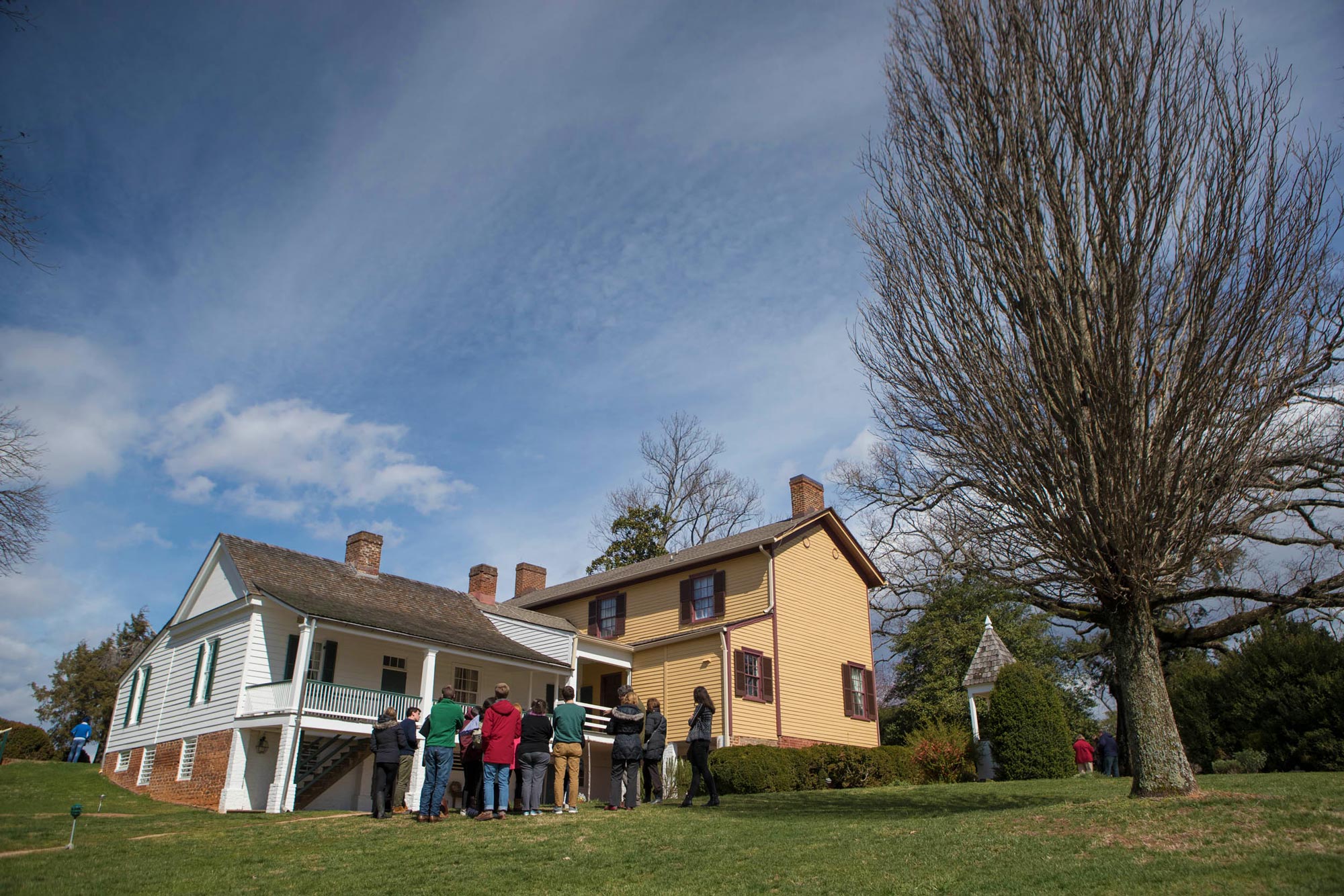
Above, the white house behind the students is now believed to have been Monroe’s guest house. Remains of his original home have been discovered in front of the adjoining building, called the Massey House. (Photos by Sanjay Suchak, University Communications)
Bon-Harper and her team now embrace the dual tasks of discovering more about Monroe’s original home and sharing their findings with the visitors who travel to Highland daily – a challenge that they shared with the UVA students.
“We have an opportunity to be really creative in how we interpret the site,” she said. “The research we are doing will shed light not just on Highland itself, but on history’s understanding of Monroe.”
The architecture, architectural history and art history students met several times with Bon-Harper, architectural historian Carl Lounsbury and others who made the discovery. They also visited similar sites nearby, including Thomas Jefferson’s Monticello.
Lounsbury, a faculty member at the College of William & Mary, showed students how small clues like the techniques used to create nails and bricks for the house led his team to suspect it was constructed much later than 1799. Subsequent tree-ring dating tests confirmed that the building’s wooden beams were cut at least 15 years later, between 1815 and 1818. In an 1818 letter to his son-in-law, Monroe made passing reference to the construction of a guest house on his property.
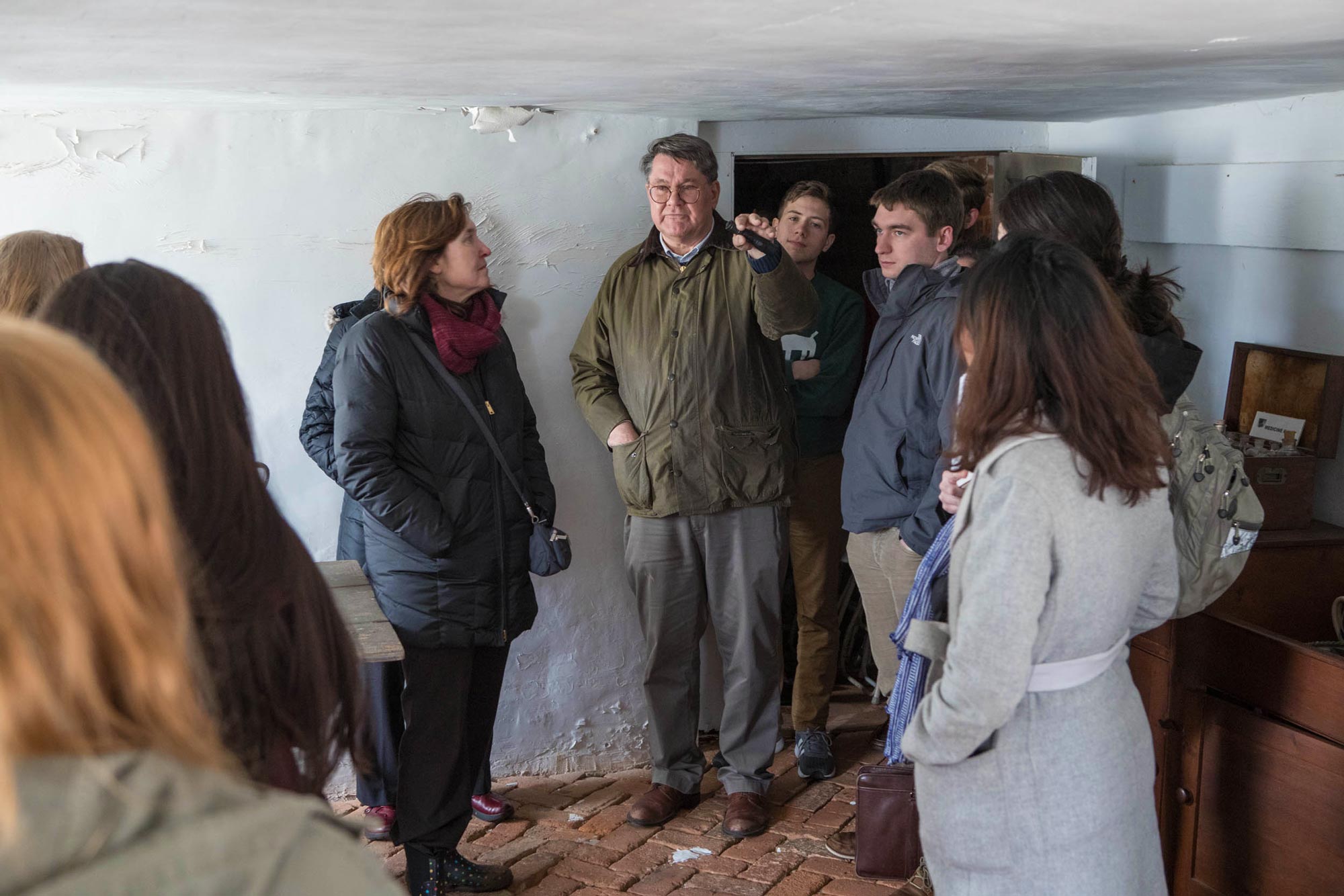
Lounsbury, above center, walked students through his team’s detailed analysis of Highland’s buildings, which ultimately led them to conclude that the existing building was not Monroe’s home.
Students split into four groups to develop new plans for presenting the property to visitors, given the new discovery. Their final presentations, delivered to Highland officials in early May, included ideas for revamping the guest house to more accurately reflect its origins, new ways of displaying the Monroes’ furniture currently housed there, new exhibits for Highland’s information center and new tour scripts.
Two of the four student teams elected to partner with ARtGlass, a technology firm that has developed augmented reality glasses and tours for several museums and historical sites in Europe. The firm hopes Highland can be one of its early test clients in the United States.
In the final presentations, fourth-year architectural history student Hannah Glatt told Bon-Harper and the assembled team that augmented reality tours allow visitors see how the site might have looked without interrupting ongoing excavations.
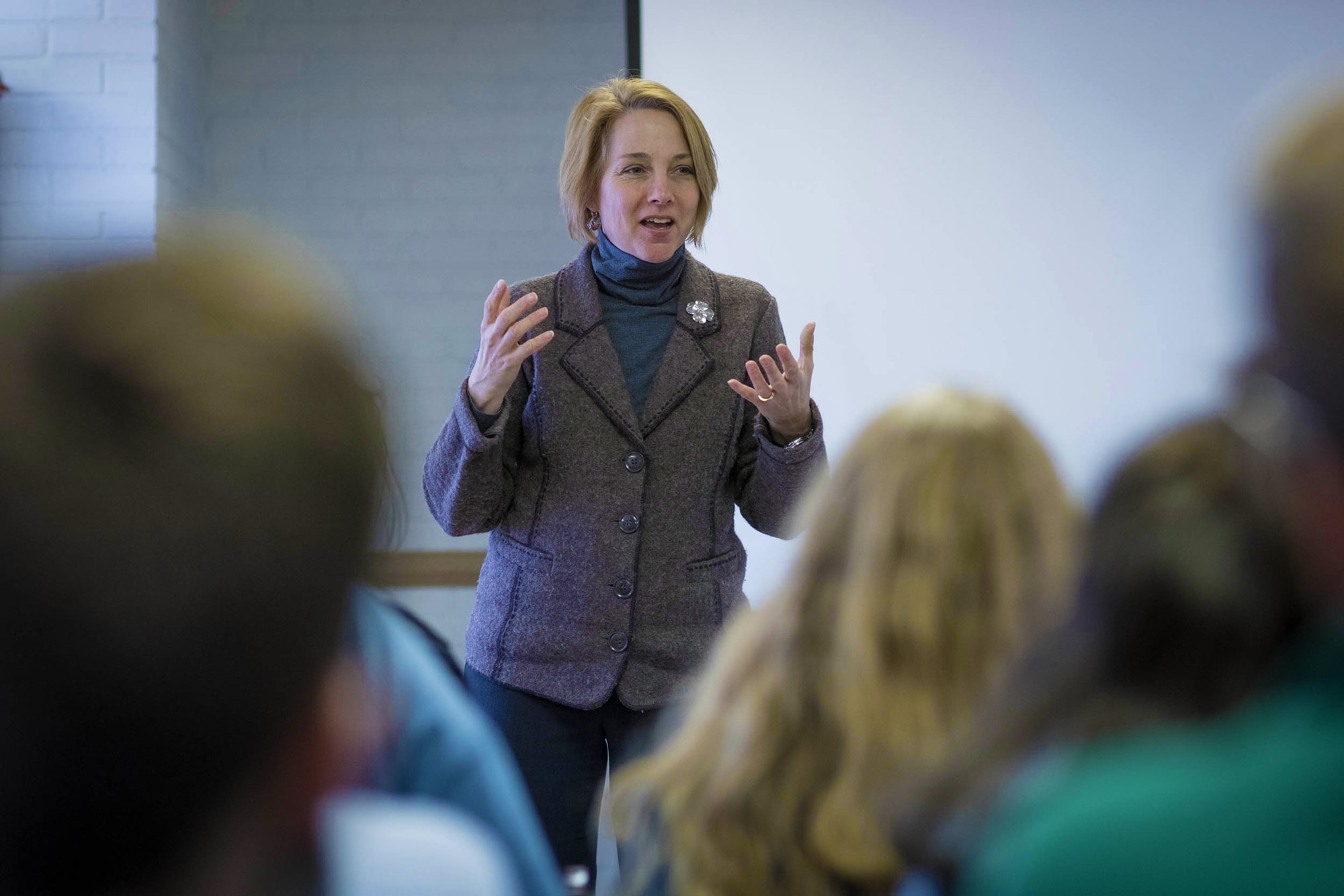
Students met with Highland executive director Sara Bon-Harper, shown above, several times throughout the spring semester.
“You can see buildings or look closely at foundation stones while still protecting them,” Glatt said. Her classmate, fourth-year architecture student Seth Pantalony, also said that augmented reality tours could be adjusted quickly.
“We were really drawn to AR because it is easy to build out new versions of the tour as more information is known,” Pantalony said.
Glatt and Pantalony’s team developed plans for a tour featuring virtual narrators – including Monroe himself – taking visitors through the property and explaining how archeologists uncovered the truth about the guest house. Other ideas for augmented reality tours included audio tracks immersing visitors in the sounds of a bustling plantation and narrations by its inhabitants, from the enslaved men and women toiling there to Monroe’s famous neighbor, Thomas Jefferson. Students also suggested using iPads – perhaps more familiar to older visitors than augmented reality glasses – to guide visitors through the guest house and archeology site.
Some groups focused closely on the guest house itself, exploring which of Monroe’s political associates might have stayed there and how the visitors – and the estate itself –influenced Monroe’s illustrious career.
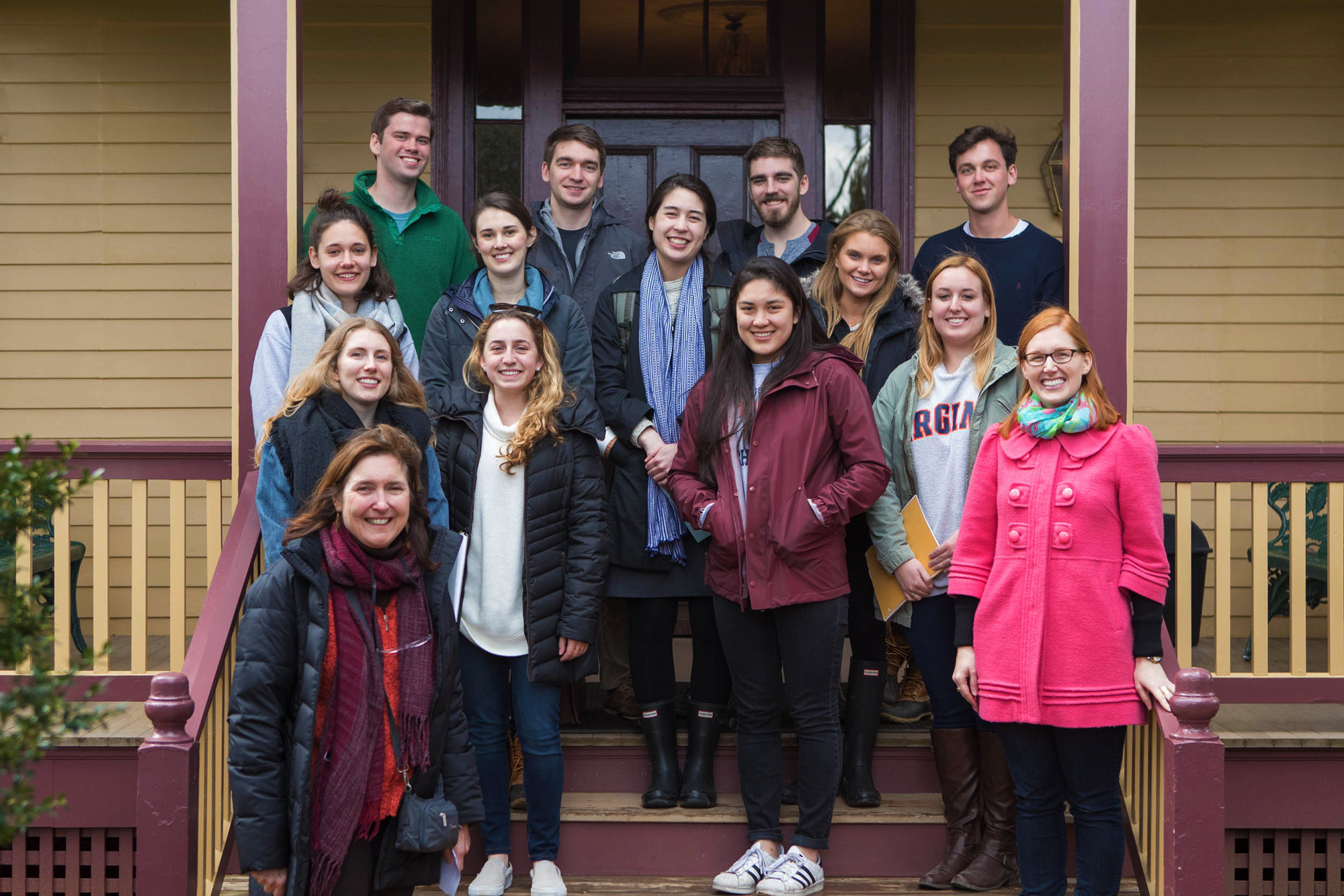
The entire class during one of their visits to Highland, with professor Lisa Reilly, bottom left.
“When Elizabeth Monroe, 25, and James Monroe, 35, purchased Highland, James Monroe had already begun his political career,” graduate architecture student Henry Hull said. “It was a built environment that undoubtedly shaped his political aspirations and school of thought.”
Others were interested in expanding the tour to include the estate’s agricultural fields and network of trails, some of which connected Monroe to Jefferson’s Monticello. Bon-Harper told students that improvements to the trails are underway and play a significant role in her team’s long-term plans for the estate.
“One of the things that we identified in our strategic planning was that we are not capitalizing on the tremendous potential of the property,” she said. “Right now, visitors are only seeing a handful of the hundreds of acres.”
Bon-Harper said that she and her creative team will carefully review and consider the students’ ideas as they continue to update the estate’s exhibits and tours in light of last year’s discovery. Ultimately, she and the students agree that, almost two centuries after Monroe sold the property, historians and tourists alike still have much to learn about Highland and the role it played in American history.
“This place has an extended, complicated history that is still in the process of being unpacked and is really changing how we think of James Monroe,” Hull said. “There were so many different factors that contributed to his development as one of the most qualified people to be president at that time.”
Media Contact
Article Information
May 30, 2017
/content/james-monroes-house-not-what-we-thought-what-comes-next-highland

